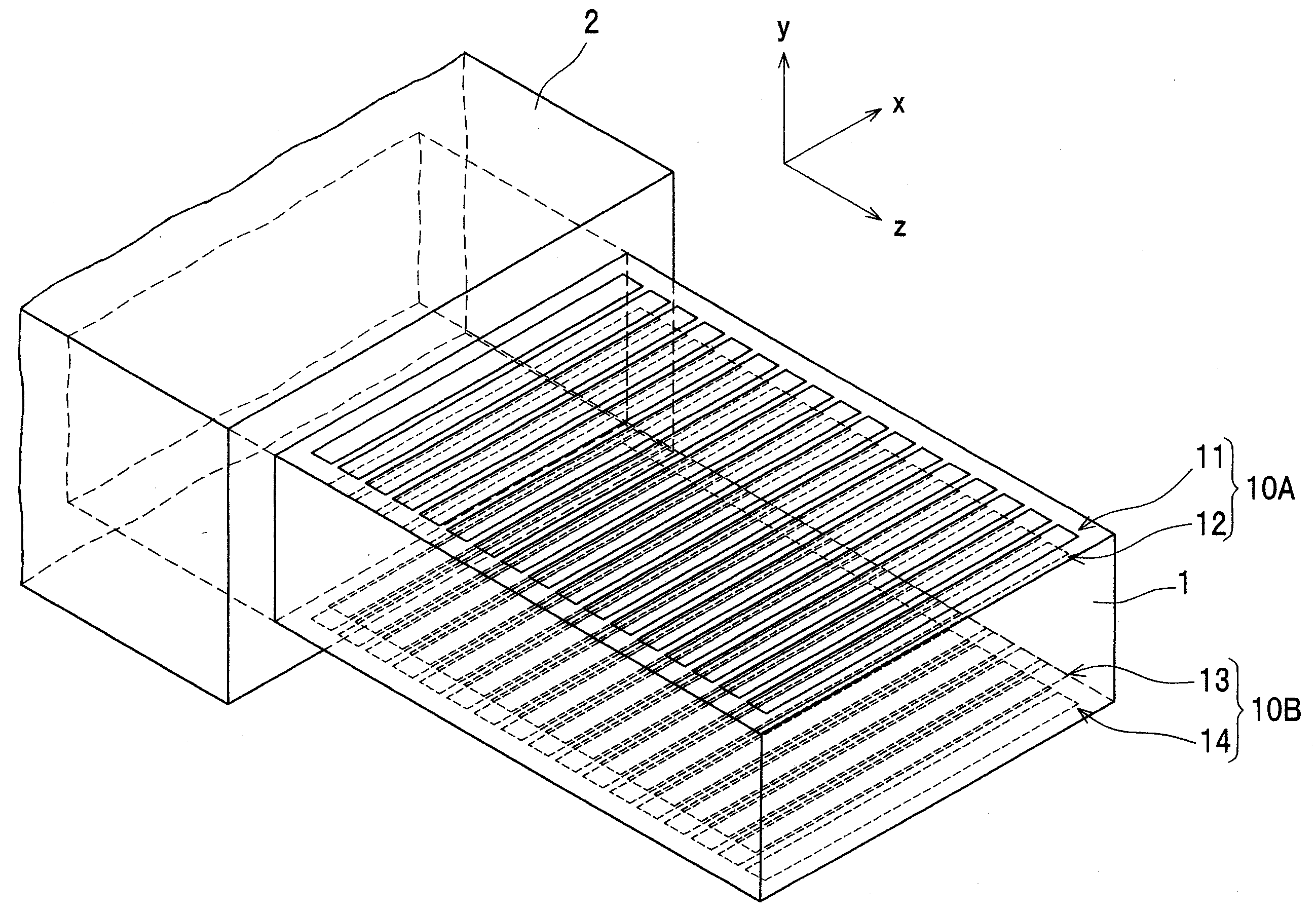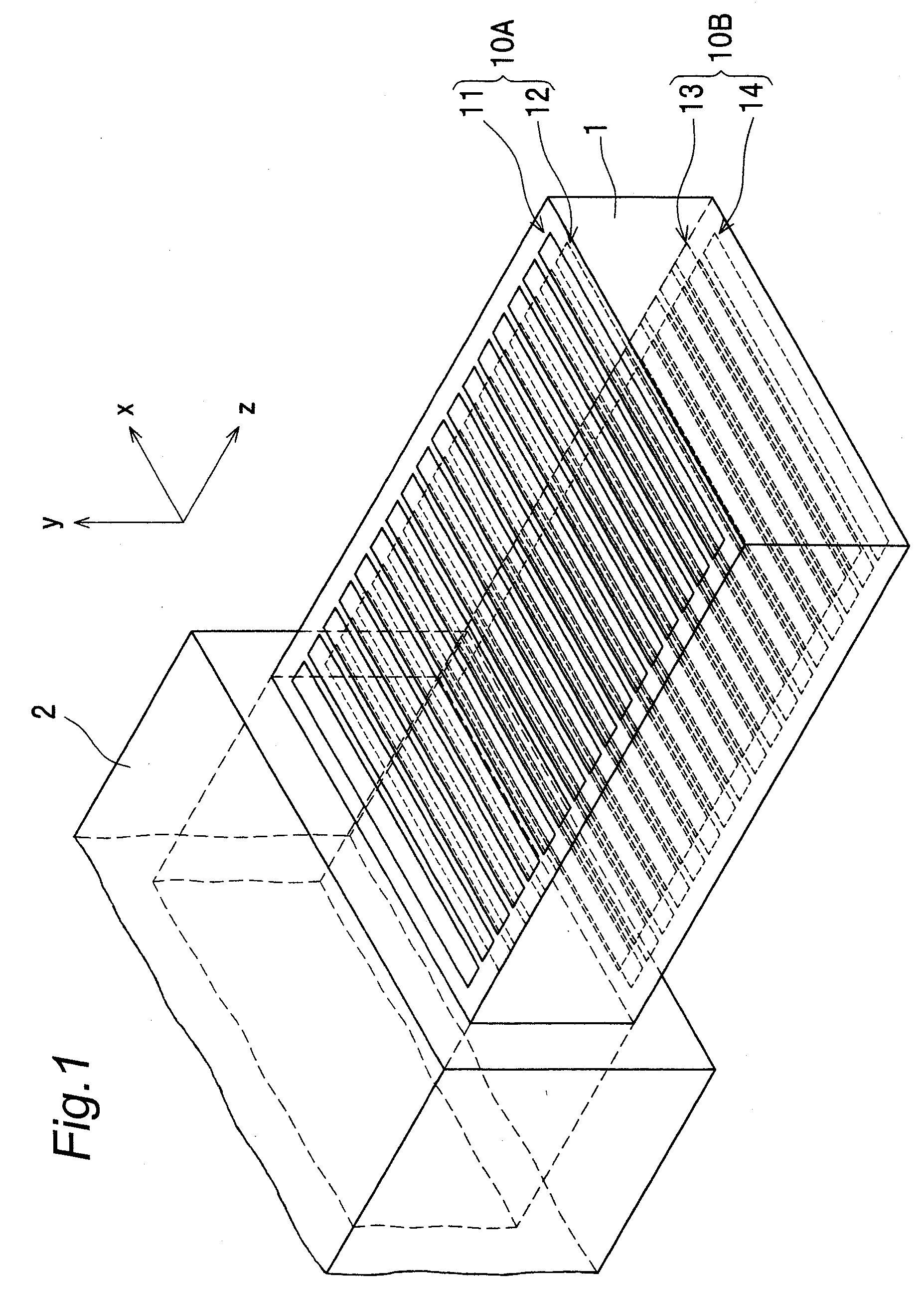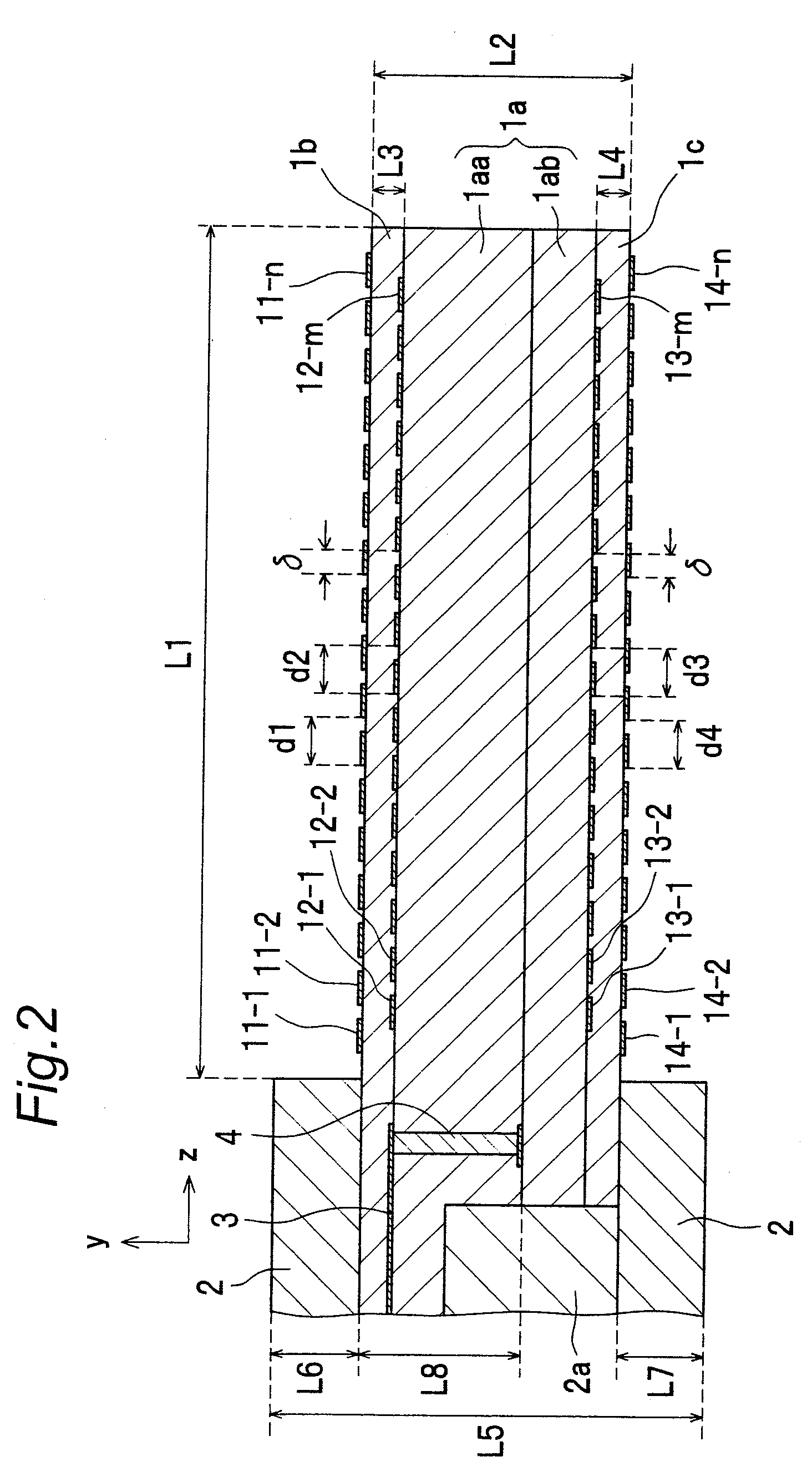Endfire antenna apparatus with multilayer loading structures
a technology of loading structure and antenna, applied in the field of antenna, can solve the problems of limiting the obtaining of high gain, adopting conventional antenna design techniques, etc., and achieves the effects of reducing the length of the dielectric transmission substrate, high gain, and high gain characteristics
- Summary
- Abstract
- Description
- Claims
- Application Information
AI Technical Summary
Benefits of technology
Problems solved by technology
Method used
Image
Examples
first preferred embodiment
[0044]FIG. 1 shows a perspective view of a configuration of an endfire antenna apparatus according to a first preferred embodiment of the present invention, partially shown in a transparent view. FIG. 2 shows a yz-plane central cross-sectional view of the endfire antenna apparatus in FIG. 1. FIG. 3 shows a front view of the endfire antenna apparatus in FIG. 1 from +z direction. The endfire antenna apparatus of the present preferred embodiment is an antenna that is provided with a dielectric transmission substrate 1 extending in a transmission direction, i.e., z-axis direction in FIG. 1, and a plurality of conductive strip elements provided to the dielectric transmission substrate 1 to be orthogonal to the z-axis direction, and that transmits an electromagnetic wave in the z-axis direction inside the dielectric transmission substrate 1 and along its surfaces, to radiate the electromagnetic wave from an end face in +z direction of the dielectric transmission substrate 1 (open end face...
second preferred embodiment
[0058]FIG. 6 shows a perspective view of a configuration of an endfire antenna apparatus according to a second preferred embodiment of the present invention, partially shown in a transparent view. FIG. 7 shows a yz-plane cross-sectional view of the endfire antenna apparatus in FIG. 6. In FIGS. 6 and 7, detailed configurations of a dielectric transmission substrate 1 and a feed circuit are omitted, because they are the same as those in the first preferred embodiment. The endfire antenna apparatus of the present preferred embodiment is characterized by including a removed region 22 which is a continuous region without placing conductive strip elements, in part of the region-for-placement of the multilayer loading structures. As shown in FIG. 7, in a non-shielded region of the dielectric transmission substrate 1 with a region length L1 (i.e., the region-for-placement of multilayer loading structures 10A and 10B), each of the multilayer loading structures 10A and 10B on a top side and a...
third preferred embodiment
[0062]FIG. 8 shows a perspective view of a configuration of an endfire antenna apparatus according to a third preferred embodiment of the present invention, partially shown in a transparent view. In the endfire antenna apparatus according to the preferred embodiment of the present invention, conductive strip elements composing multilayer loading structures 10A and 10B are not necessarily formed over the entire length in a width direction of a dielectric transmission substrate 1. The endfire antenna apparatus of the present preferred embodiment is characterized by including conductive strip groups 11A and 11B, 12A and 12B, 13A and 13B, and 14A and 14B, which are configured by dividing into two parts the conductive strip groups 11, 12, 13, and 14 of the endfire antenna apparatus of the first preferred embodiment, at the center in the width direction (x-axis direction). Even when the conductive strip elements of all conductive strip groups in the endfire antenna apparatus are thus divi...
PUM
 Login to View More
Login to View More Abstract
Description
Claims
Application Information
 Login to View More
Login to View More - R&D
- Intellectual Property
- Life Sciences
- Materials
- Tech Scout
- Unparalleled Data Quality
- Higher Quality Content
- 60% Fewer Hallucinations
Browse by: Latest US Patents, China's latest patents, Technical Efficacy Thesaurus, Application Domain, Technology Topic, Popular Technical Reports.
© 2025 PatSnap. All rights reserved.Legal|Privacy policy|Modern Slavery Act Transparency Statement|Sitemap|About US| Contact US: help@patsnap.com



